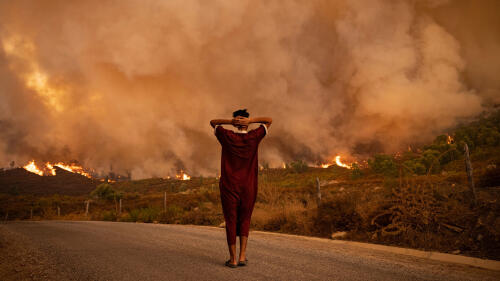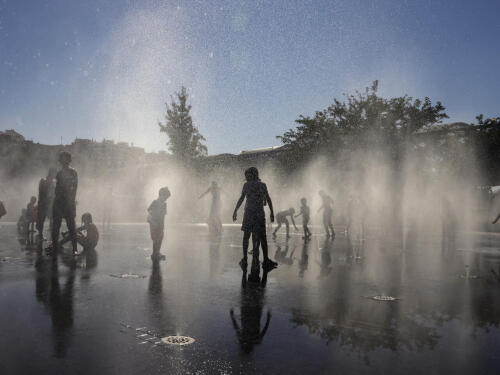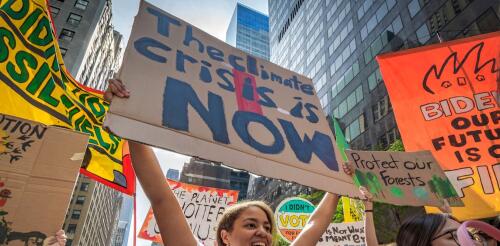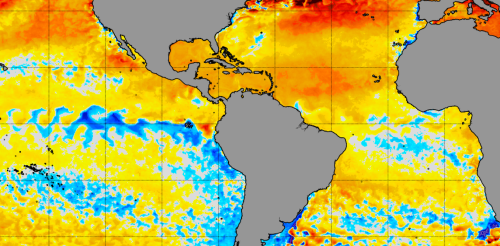Global warming
The warming climate doesn’t only melt ice caps and bleach coral reefs but also puts your health at risk. Climate change is no longer a far-removed issue, able to be cast off as a problem “of tomorrow.” Climate change alters health both through long-term stressors, such as air pollution1 and vector-borne diseases2, and through acute events, such as heat waves3 and hurricanes.4 These long and short term elements collectively influence public health around the world. Climate change has health consequences from the scale of entire populations all the way down to the level of your cells.5 Here are six things that are sometimes forgotten regarding climate and health: Climate change is associated with infectious disease spread As temperatures rise, disease vectors like mosquitoes and ticks move northward into newly habitable terrain.2,6,7 This means that diseases that were previously only endemic to t...
Earth withered through a second straight day of record-breaking temperatures on 22 July, the EU’s climate monitor said Wednesday, as parts of the world suffer devastating heatwaves and wildfires. Preliminary data from the Copernicus Climate Change Service (C3S) showed the daily global average temperature was 17.15 degrees Celsius on Monday, the warmest day in recorded history. This was 0.06 Celsius hotter than the day before on 21 July, which itself broke by a small margin the all-time average high temperature set only a year before. “This is exactly what climate science told us would happen if the world continued burning coal, oil and gas,” said Joyce Kimutai, a climate scientist from Imperial College London, on Wednesday. “And it will continue getting hotter until we stop burning fossil fuels and reach net zero emissions.” Copernicus, which uses satellite data to update global air and sea temperatures close to real time, s...
Tropical Storm Debby was moving so slowly, Olympians could have outrun it as it moved across the Southeast in early August 2024. That gave its rainfall time to deluge cities and farms over large parts of Florida, Georgia and the Carolinas. More than a foot of rain had fallen in some areas by early Aug. 7, 2024, with more days of rain forecast there and into the Northeast. Mathew Barlow, a climate scientist at UMass Lowell, explains how storms like Debby pick up so much moisture, what can cause them to slow or stall, and what climate change has to do with it. What causes hurricanes to stall? Hurricanes are steered by the weather systems they interact with, including other storms moving across the U.S. and the Bermuda High over the Atlantic Ocean. A hurricane may be moving slowly because there are no weather systems close enough to pull the hurricane along, or there might be a high-pressure system to the north of the hurricane that blocks its forward movement. In this case,...
You probably have been hearing phrases like “climate crisis,” “climate emergency” or “climate justice” more often lately as people try to get across the urgent risks and consequences of climate change. The danger is real, but is using this language actually persuasive? It turns out that Americans are more familiar with – and more concerned about – climate change and global warming than they are about climate crisis, climate emergency or climate justice, according to a recent survey we conducted with a nationally representative sample of 5,137 Americans. Moreover, we found no evidence that the alternative terms increased people’s sense of urgency, willingness to support climate-friendly policies or willingness to act. The familiar terms – climate change and global warming – did at least as well, and sometimes better, than climate crisis and climate emergency in eliciting concern, perceived urgency and willingness...
The North Atlantic Ocean has been running a fever for months, with surface temperatures at or near record highs. But cooling along the equator in both the Atlantic and eastern Pacific may finally be starting to bring some relief, particularly for vulnerable coral reef ecosystems. This cooling comes from two climate phenomena with similar names: La Niña, which forms in the tropical Pacific, and the less well-known Atlantic Niña. Both can affect the Atlantic hurricane season. While La Niña tends to bring conditions ideal for Atlantic hurricanes, the less powerful Atlantic Niña has the potential to reduce some of the hurricane risk. Cooling in the tropical Atlantic along the equator is a sign an Atlantic Niña may be forming. NOAA Climate.gov We’re ocean and atmospheric scientists who study this type of climate phenomenon. It’s rare to see both Niñas at the same...




